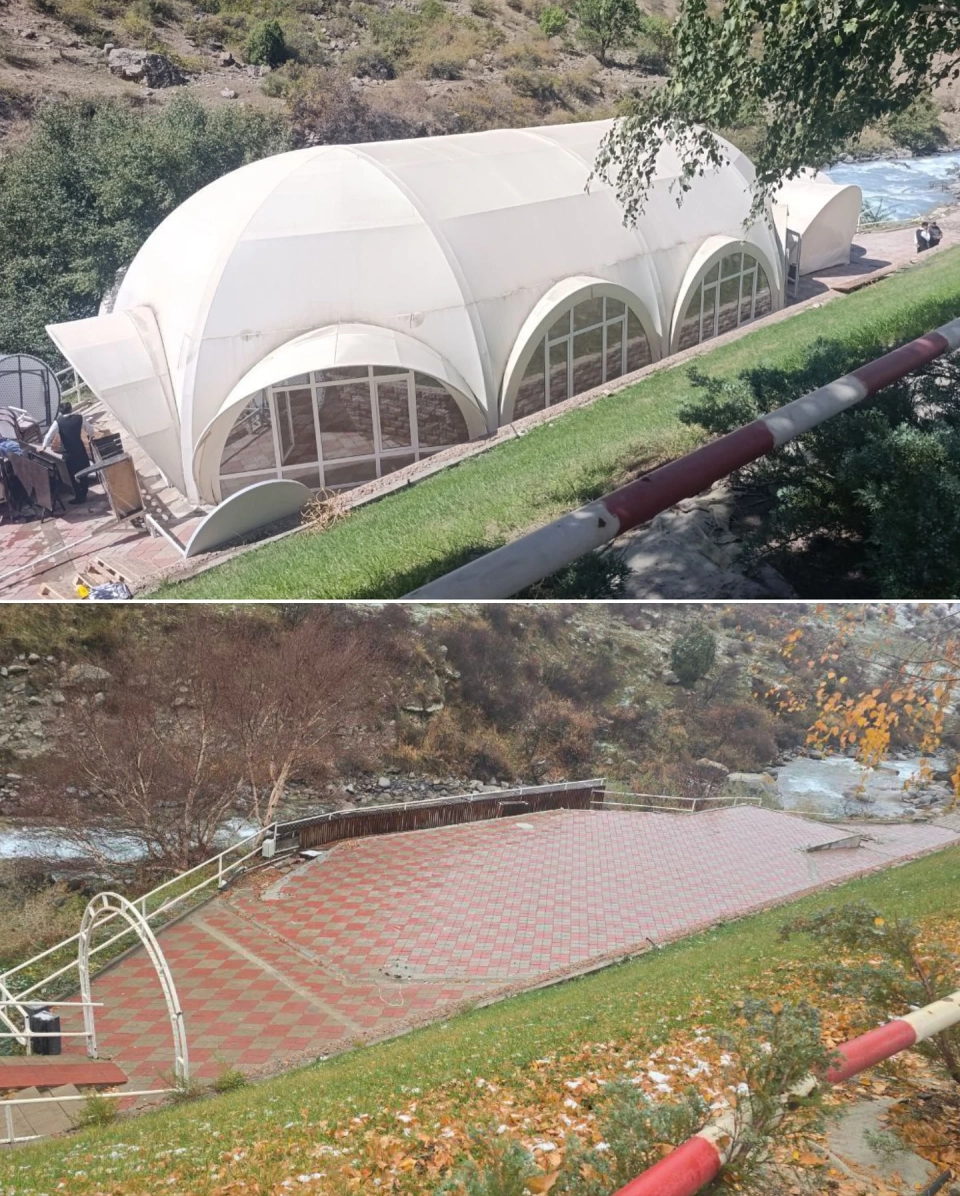On Borobai Bi Street, 43 in Karakol, located in the Issyk-Kul region, stands a house that is over...
In Karakol, located in the Issyk-Kul region, at 143 Alyshbaeva Street (formerly known as Lenin...
In Karakol, located in the Issyk-Kul region, on Alyshebaeva Street (formerly known as Lenin), there...
In Karakol, located in the Issyk-Kul region, there is a historic house built in the late 19th to...
In Karakol, located in the Issyk-Kul region, there is a building that was erected over a hundred...
In Karakol, located in the Issyk-Kul region, there stands a building constructed after the...
On Alabakova Street, house number 155 (165) in Karakol, located in the Issyk-Kul region, a...
In Karakol, located in the Issyk-Kul region, there has been an increase in prices for beef, lamb,...
In the Issyk-Kul region, in Karakol, an incident occurred when a driver lost control of their...
In the Issyk-Kul region, in the city of Karakol, there is an ancient building of the pedagogical...
The city of Balykchy, once an important transit point on the Great Silk Road, is now a key economic...
In Karakol, on Masaliev Street, formerly known as Fuchik, there is a racetrack covering 44...
According to the press service of the Internal Affairs Directorate of the Issyk-Kul region, the...

City in Honor of N.M. Przhevalsky Starting from 1875, the growth rate of the city significantly...

Birthday of Karakol (Przhevalsk) - July 1, 1869 History has preserved for us the exact date,...
In Karakol, located in the Issyk-Kul region, there is a historic building that has turned 120 years...

Traveling along the eastern part of the Issyk-Kul Lake coast, you will definitely find yourself in...
In the Issyk-Kul region, in Karakol, snow has fallen, reaching knee level. This was reported by...
In the Issyk-Kul region, in the city of Karakol, there is a significant Dungan mosque. The building...
On Gorky Street (Zhusayev) in the city of Karakol, Issyk-Kul region, there is an old house,...

In Karakol, the regional drama theater named after K. Djantoshev is closing its 31st theater...
Elmira Ashyrbaeva, the head of the urban planning and architecture department in the Jumgal...
At the intersection of Abdrahmanov and Toktogul streets in Karakol, a traffic accident occurred...

ZENKOV Andrei Pavlovich...
In the Issyk-Kul region, in the Ak-Suu district, autumn irrigation is being carried out, affecting...
In the Batken region, in the city of Aydarken in the Kadamjai district, there is a historical site...
In the Issyk-Kul region, the police officers of the Ak-Suu district successfully located a...

Mountain Passes of Issyk-Kul Region San-Tash Pass (height 2195 m) is located in the Issyk-Kul...
According to data from the National Statistics Committee, since the beginning of 2025, there have...

Nikolai Mikhailovich Przhevalsky. The first explorer of the nature of Central Asia. The residents...

Historical and Cultural Monuments of the City of Karakol Attractions of the Southern Shore of...

Century-old Dungan Mosque Made of Pine and Fir The surroundings of Issyk-Kul are not only resort...

On September 23, 2014, in honor of the State Language Day of the Kyrgyz Republic, a seminar was...
In the village of Novovoznesenovka, located in the Ak-Su district of the Issyk-Kul region, funding...
In Karakol, an incident occurred when a driver lost control and crashed into the wall of a...

In 1888, the great Russian traveler and explorer of Central Asia, Nikolai Mikhailovich...
In the village of Tyup, located in the Tyup district of the Issyk-Kul region, the construction of a...

In the Chui region, near the Jannat Resort hotel, an illegal construction was identified. The...

Today, the city of Karakol is celebrating the Independence Day of the Kyrgyz Republic, the 145th...
In Karakol, located in the Issyk-Kul region, Vadim Arkhipov works as a computer science teacher who...
The correspondent of Turmush provides information about the development of the educational sector...
On November 5, the press service of the Ministry of Emergency Situations of the republic reported...

Outstanding People of Karakol The chronicle of the city of Karakol preserves the names of...
The correspondent of Turmush shared interesting facts about the educational system of the Issyk-Kul...